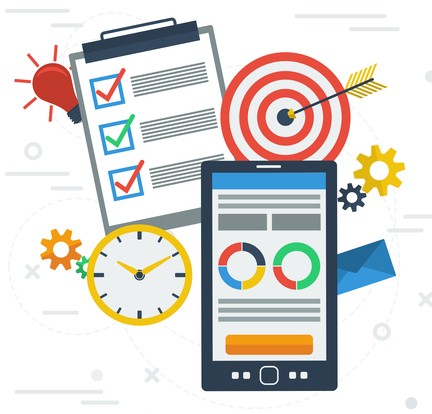 Benjamin Franklin said it best: “Waste neither time nor money, but make the best use of both. Without industry and frugality, nothing will do, and with them everything.”
Benjamin Franklin said it best: “Waste neither time nor money, but make the best use of both. Without industry and frugality, nothing will do, and with them everything.”
What better motto for a small business owner. Here are 10 ways to avoid wasting your time and money.
1. Advertise through social media
You can do free or low-cost promotions through Facebook and other social media sites instead of spending considerable dollars on traditional media (print, radio, and TV). You can use favorable customer reviews to help your promote your business. If you have room in your advertising budget, consider spending it on experts to help you with promotion, such as PR agents.
2. Buy used/recycled equipment
You don’t need a new file cabinet to warehouse your papers; a used one will do just fine. Pre-owned vehicles, shelves, restaurant supplies, and more may be perfectly adequate and considerably less costly than new items. You may be able to buy recycled electronic items (copiers, printers) for less than half the cost of new items. Check Craigslist or do a Google search for the used items you’re seeking.
3. Don’t overstock supplies
I recently had to buy a new printer, which meant my unused $187 toner for the old one became useless. I couldn’t sell it for a meaningful return on eBay (listings were $40 and under with free shipping, and there were no bidders). The lesson: Don’t have more supplies on hand than you need. Today it’s easy to obtain needed supplies overnight through Staples, Amazon, etc. without leaving your office.
4. Eliminate interest payments
Don’t charge more on your credit card than you can afford to pay off in full. Sticking to your budget means you won’t pay any interest charges. If you have to go over budget from time to time, make sure you have a low-cost credit card to minimize interest charges. Find one suitable for your business needs through NerdWallet (there are 133 listed).
5. Optimize mobile options
Run your business better with apps for mobile devices. There are many free apps, for example, that let you do things on the fly, such as checking your bank balance, post expenses, and stay in contact with customers. Even if you have to pay for apps, they may save you money in the long run. For example, I use MileIQ to track my business driving, and the cost of the app is easily covered by having a complete record of business driving (I have partnered with them).
6. Outsource needed work
Instead of hiring new employees as the work load grows, along with the added costs of payroll taxes and employee benefits, use independent contractors. Here you’ll pay a flat fee with no responsibilities for taxes, benefits, insurance, or anything else. Just make sure that the arrangement is really an independent contractor arrangement and not an employer-employee arrangement. Find information about worker classification from the IRS and the DOL.
7. Reduce insurance premiums
Insurance is vital to every business … for health coverage, liability protection, property damage, business interruption, and more. Be sure to have all the types of coverage needed for your situation. But cut premiums by shopping around, increasing deductibles, and eliminating unneeded extras that policies may offer. If you have a retail/restaurant establishment, you may be able to take on glass coverage on your business owner policy (BOP) for little or no cost.
8. Save on taxes
Don’t pay a penny more than the law requires you to. Take advantage of all deductions and credits to which you are entitled. Some small business owners working from home do not take a home office deduction for fear that it’s an audit red flag. There is no proof of this, so if you meet eligibility requirements for the home office deduction, take it! My revised book, J.K. Lasser’s Small Business Taxes 2017 will be available in late October.
9. Turn off the lights
Don’t waste electricity by running office lights and other equipment when no one is around. Put lights and devices on timers. Use “energy saver” equipment that automatically sleeps when not in use.
10. Use down time
When you wait in line, at the post office, bank, or elsewhere, you can use your time productively to check email or do other tasks on your mobile device. DO NOT DO THIS WHILE DRIVING.
Conclusion
Do you have other ideas for saving time and money? Please share them with me and I’ll post them (with credit to you). Email them to barbara @ barbaraweltman dot com. Thanks.


